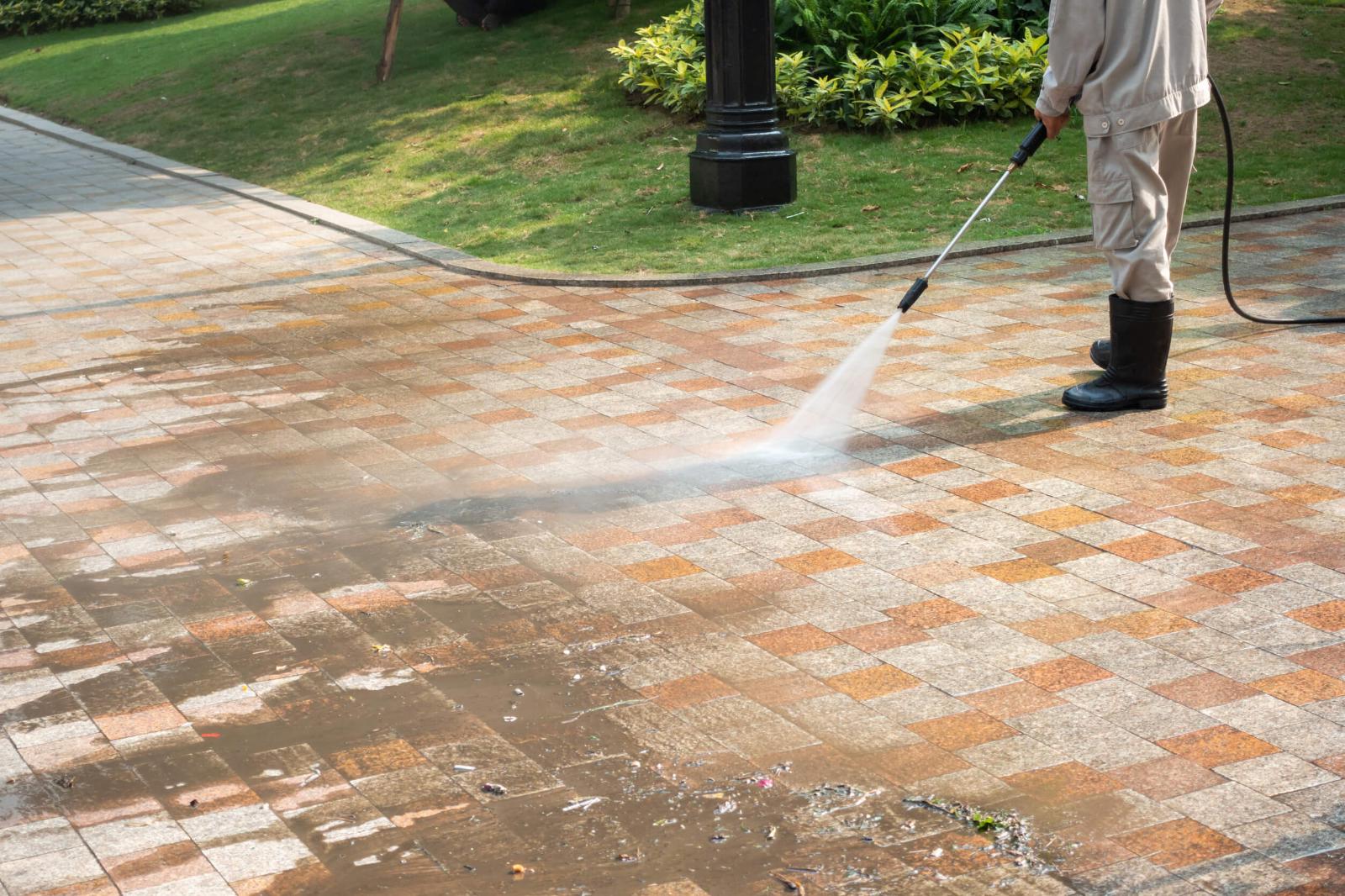Pressure Washing
Pressure Washing: Uses a high-pressure stream of water, typically exceeding 1,300 PSI.
Ideal for: Blasting away tough dirt, grime, mold, and mildew from durable surfaces like concrete driveways, stone, and brick
Book Now
When to Use Pressure Washing (and NOT Soft Washing):
Heavily Stained Concrete Driveways and Sidewalks: For deep-set oil stains, tire marks, or ground-in dirt on durable concrete surfaces, the high force of pressure washing is essential to effectively lift and remove these stubborn contaminants. Soft washing might clean the surface, but it's unlikely to fully remove deeply embedded stains without extreme chemical concentrations.
Hard-Surface Patios (Brick, Pavers, Stone): Similar to concrete, these surfaces can withstand high pressure and often accumulate tough dirt, moss, and grime that benefits from a powerful blast.
Unfinished or Heavily Soiled Decks (prepping for re-staining): If you need to remove old stain, paint, or deeply embedded dirt before applying a new finish, the abrasive nature of pressure washing is often necessary. Soft washing wouldn't be strong enough to strip a finish.
Rust Stains on Concrete: While some specialized soft washing solutions exist for rust, pressure washing combined with specific rust-removing chemicals is generally more effective for eliminating rust stains from concrete surfaces.
Fun Fact:
The concept of pressure washing was accidentally discovered in 1926 by Frank W. Ofeldt II in Pennsylvania. He was working on a whiskey still (yes, during Prohibition!) and noticed that when wet steam from the still hit his greasy garage floor, it actually cleaned the grease! This sparked the idea for the first steam pressure washer, initially called the "High-Pressure Jenny.

Environmental effects:
Despite their powerful output, many pressure washers (especially when used correctly by professionals) are surprisingly water-efficient. They can use significantly less water than a standard garden hose to clean the same area, making them an eco-friendlier option for large cleaning tasks.
